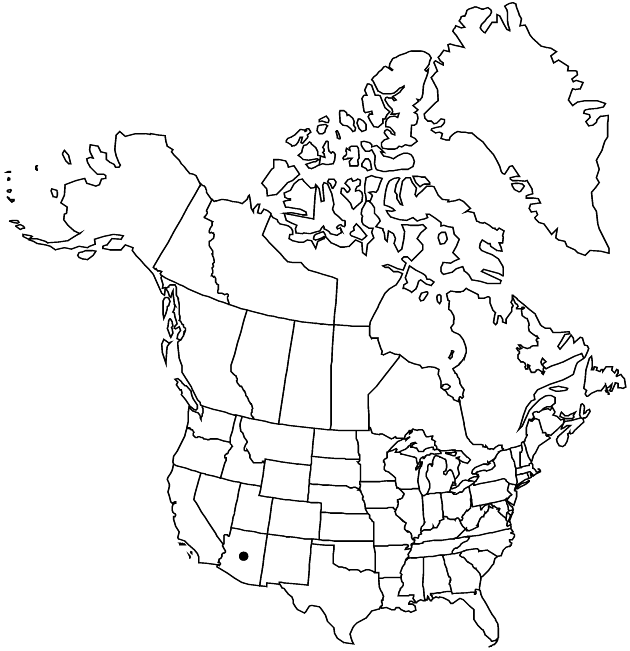Difference between revisions of "Psilactis gentryi"
Syst. Bot. 18: 302. 1993.
FNA>Volume Importer |
imported>Volume Importer |
||
| (5 intermediate revisions by 2 users not shown) | |||
| Line 7: | Line 7: | ||
|year=1993 | |year=1993 | ||
}} | }} | ||
| − | |basionyms={{Treatment/ID/ | + | |basionyms={{Treatment/ID/Basionym |
|name=Aster gentryi | |name=Aster gentryi | ||
|authority=Standley | |authority=Standley | ||
| + | |rank=species | ||
| + | |publication_title=Publ. Field Mus. Nat. Hist., Bot. Ser. | ||
| + | |publication_place=22: 60. 1940 | ||
}} | }} | ||
|synonyms={{Treatment/ID/Synonym | |synonyms={{Treatment/ID/Synonym | ||
|name=Machaeranthera gentryi | |name=Machaeranthera gentryi | ||
|authority=(Standley) R. C. Jackson ex B. L. Turner | |authority=(Standley) R. C. Jackson ex B. L. Turner | ||
| + | |rank=species | ||
}} {{Treatment/ID/Synonym | }} {{Treatment/ID/Synonym | ||
|name=Machaeranthera mexicana | |name=Machaeranthera mexicana | ||
|authority=B. L. Turner & D. B. Horne | |authority=B. L. Turner & D. B. Horne | ||
| + | |rank=species | ||
}} | }} | ||
|hierarchy=Asteraceae;Asteraceae tribe Astereae;Psilactis;Psilactis gentryi | |hierarchy=Asteraceae;Asteraceae tribe Astereae;Psilactis;Psilactis gentryi | ||
| Line 41: | Line 46: | ||
-->{{#Taxon: | -->{{#Taxon: | ||
name=Psilactis gentryi | name=Psilactis gentryi | ||
| − | |||
|authority=(Standley) D. R. Morgan | |authority=(Standley) D. R. Morgan | ||
|rank=species | |rank=species | ||
| Line 56: | Line 60: | ||
|publication year=1993 | |publication year=1993 | ||
|special status= | |special status= | ||
| − | |source xml=https:// | + | |source xml=https://bitbucket.org/aafc-mbb/fna-data-curation/src/2e0870ddd59836b60bcf96646a41e87ea5a5943a/coarse_grained_fna_xml/V19-20-21/V20_1071.xml |
|tribe=Asteraceae tribe Astereae | |tribe=Asteraceae tribe Astereae | ||
|genus=Psilactis | |genus=Psilactis | ||
Latest revision as of 19:58, 5 November 2020
Annuals, 20–120 cm. Stems and branches often sparsely appressed- or erect-hairy, stipitate-glandular, more densely distally. Distal leaf blades ovate to lanceolate, smallest 5–12 × 2–6 mm, bases cordate to auriculate, clasping. Involucres hemispheric, 5–8 mm. Phyllaries lanceolate to linear-lanceolate, equal or slightly unequal, 4–7 × 0.7–1.2 mm; outer often mostly herbaceous (bases inconspicuously indurate), scarious margins absent or obscured by stipitate glands; inner: bases indurate, margins scarious. Receptacles flat to convex, 4–6 mm diam. Ray florets 30–70; laminae 7–14 × 1–1.5 mm. Disc florets 50–150; corollas 2.5–4.5 mm. Ray cypselae 1.2–2 mm, sparsely to densely appressed-hairy. Disc cypselae 1.2–2.5 mm, sparsely to densely appressed-hairy; pappus bristles 40–50, 2.5–4 mm. 2n = 8 (Mexico).
Phenology: Flowering Sep–Nov.
Habitat: Canyon bottoms, along rocky streambeds
Elevation: 1700–2300 m
Distribution

Ariz., Mexico (Chihuahua, Durango, Hidalgo, Mexico, Sonora).
Discussion
Psilactis gentryi occurs in the Huachuca Mountains of southeastern Arizona.
Selected References
None.